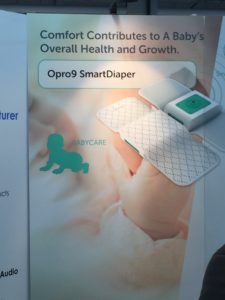This year’s Consumer Electronics Show (CES) highlighted several technology trends that will affect the future of the AV industry. Here are some of my observations after walking the show floor.
HDR
By now, 4K is the industry standard, and prices on 4K players are dropping significantly compared to the previous year. While many vendors discussed 8K, the big message was around the emergence of HDR – with equal attention paid to supporting streaming content from major providers, and to developing displays capable of supporting that content. This is good news for Biamp’s customers because our TesiraLUX video product supports HDR. We believe that HDR is much more important for the majority of users than the ultimate in high resolution, which can only be noticed when you are standing close to the screen.
Thinner Displays
As electronics become more ubiquitous in everyday life, shrinking a device’s footprint is increasingly important. All of the major manufacturers showed ever-thinner – sometimes almost impossibly so – monitors and displays at CES. As a complement to this trend, Samsung highlighted a connector and cabling system for simplifying home theater wiring.

Portability
Small, short-throw projectors were another video-related trend. Unlike traditional wall- or ceiling-mounted projectors, these devices are designed to be used in a similar fashion to Bluetooth loudspeakers, meaning they can be carried around the user’s house and projected against any blank surface. Several manufacturers, most notably Sony, were showing these devices. In addition, multiple vendors added the concept of interactivity into the mix, showing prototype devices capable of projecting a computer screen and allowing people to use their hands to interact with that screen.
Virtual Reality
Many of the blog posts from the show highlighted the general lack of breakthroughs in the VR space this year, which most authors declared disappointing. To some extent, I agree. While there was plenty of VR around – nearly everyone had viewing devices – there were no groundbreaking new devices introduced. What was more interesting, however, was how VR was being used. In addition to the gaming element, many of the car manufacturers were using VR to demonstrate their autonomous cars. This was very interesting to me – one nascent technology being used to sell another.
Another element I think many attendees missed was the emergence of VR capture devices. This phenomenon was mainly present in the start-up area, Eureka Park. VR capture devices are 360-degree cameras and 3D immersive audio capture devices. These are going to fuel the creation of real content for VR display devices and will kick-start the real world use cases for them, especially when the devices are cheap enough for most people to access them. I also noticed rigs for using VR goggles in a more immersive way, including a device that allowed people to “fly” whilst wearing the goggles.

Audio
Apart from the 3D, 360-degree audio capture devices for capturing sound for VR use, the audio side of CES was fairly quiet. I noticed a continuing focus on high resolution audio, with some companies talking about 32-bit content. Granted, support for 32-bit content may be mostly hype, considering the limits of audibility. One interesting development was that Tidal is now using the relatively new master quality authenticated (MQA) format to stream 24 bit content on its service. This development will be good for our commercial audio industry as it will give more people exposure to high res audio in the same way that Netflix®, Amazon Prime™, and Dish Network® streaming 4K HDR video content exposes consumers to high definition video.
Final Thoughts
Connected devices were a major theme of this year’s show, and I was on a personal quest to find the most ridiculous one. I heard about two connected hairbrushes from different manufacturers, but the connected diaper really stole the show. Above all (and I may be slightly biased), I have to say the oddest connected device I encountered was a connected vinyl album with a smart label allowing for embedding extra content, such as videos.

Did you notice any industry trends we didn’t cover? Leave a comment and let us know.
